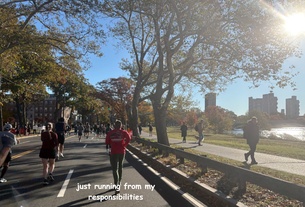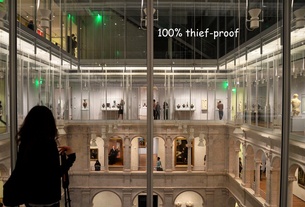As a first-year student aspiring to study computer science, Anne W. Madoff ’15 felt at times that she had the weight of her gender on her shoulders.
“At most, you would see 30 percent women in an [engineering] classroom, often less—you could be in a section where you were the only girl,” Madoff said. “I would feel tremendously scared to ask a question, because I would think if I asked a stupid question, I would make girls look bad.”
Madoff said that she has since overcome that fear, one that she said commonly weighs on female undergraduates studying engineering, computer science, and related technical fields at the School of Engineering and Applied Sciences, where two-thirds of all concentrators are male—a ratio that has stayed constant even as the school has doubled in size since 2009.
According to Dean of Admissions and Financial Aid William R. Fitzsimmons '67, this lopsided ratio among those interested in science and engineering fields accounts for a portion of the growing gender gap among the students admitted to Harvard. 55 percent of students admitted to the College this April were male, meaning that nearly 200 more men than women may graduate with a College degree in 2018.
Amid ongoing efforts by administrators and students to decrease the size and effects of the gender gap in SEAS classrooms, questions remain regarding Harvard’s ability to address the gender disparity in its fastest-growing school.
PARTING THE SEAS
As the University allocates substantial resources to SEAS, skewed gender ratios have persisted within the school’s student body, a trend that is highlighted by SEAS’s remarkable growth and reflected in the mass of students applying to Harvard.
{shortcode-16ae15662c1c7eb4c66af0f596bdff0955cbe26e}
With SEAS slated to receive $450 million out of the University’s total $6.5 billion goal in its recently launched capital campaign and projects already underway to expand the school’s facilities into Allston, many have hailed SEAS as a new front for Harvard's liberal arts education.
But compared to other fields of study at the College, the gender imbalance in SEAS concentrations is particularly large. In the last five years, the number of female concentrators in SEAS has ranged from 31 to 34 percent, with statistics of the 2011-2012 concentrator breakdown suggesting that the percentage is even lower in computer science and the branch of engineering sciences that awards S.B., rather than A.B., degrees.
This 2-to-1 ratio of males to females has persisted during rapid growth of SEAS in recent years. Since 2009, the school has experienced a 137 percent increase in undergraduate enrollment, according to data provided by SEAS’s executive director of communications Paul Karoff.
The growing ability of SEAS to attract and retain students already at Harvard—as demonstrated by escalating enrollments in classes like Computer Science 50 and Engineering Sciences 50—can account, in part, for this growth in enrollment. But the rise also stems from increased interest in engineering, technology, and related fields among students applying to college. This year, the Admissions Office saw a 60 percent increase in applicants who said that they were interested in studying computer science, said Fitzsimmons.
Rising application rates from these students can produce gender imbalances in applicant pools, as demonstrated by the 10 percent gap in male and female students in the College’s incoming class. This proportion mirrors admissions trends at schools with the nation’s premier engineering programs. The class set to graduate in 2017 at Stanford and MIT is 53 percent male and 55 percent male, respectively. At the California Institute of Technology, the class of 2017 is 62 percent male.
These imbalances, however, defy general trends in higher education, in which women have represented the majority of college students in the United States since 1979, according to the National Center for Education Statistics. In 2012, the agency reported that women constituted 56.8 percent of the nation’s college students.
PRESSURES IN THE CLASSROOM


